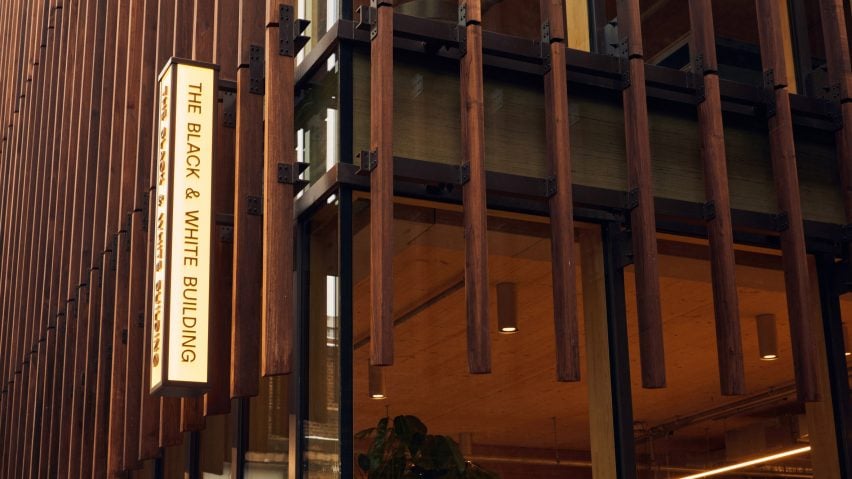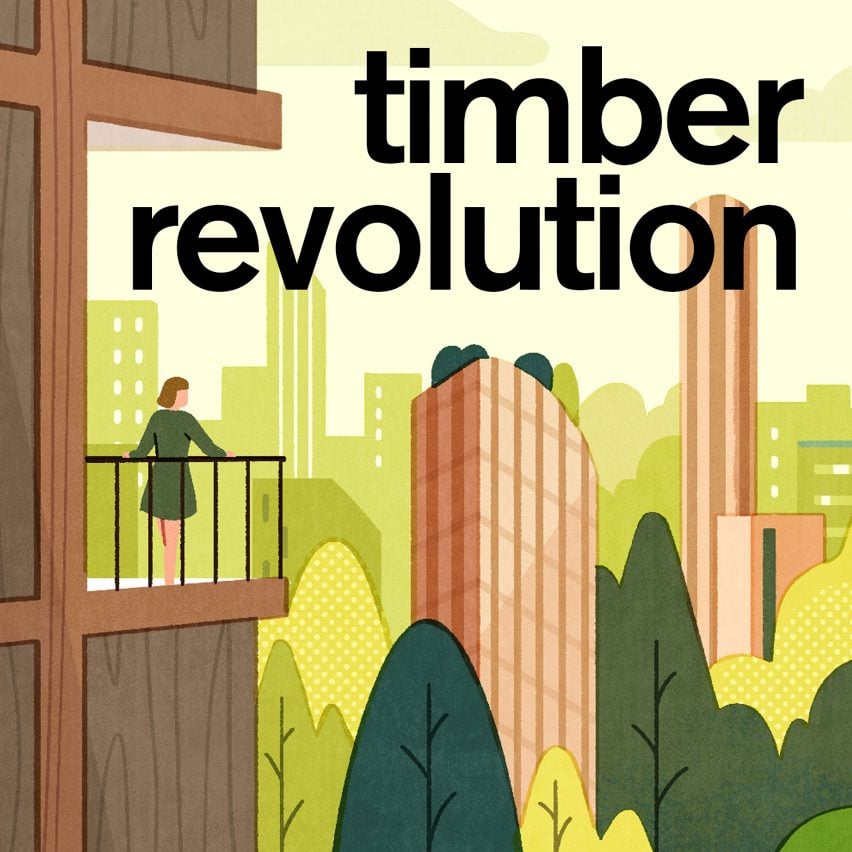
"Timber alone cannot get us out of this mess"
Concrete as well as timber will be required to address the twin challenges of averting climate disaster and building the infrastructure the world needs, writes Philip Oldfield as part of our Timber Revolution series.
There is a paradox in our desire for a low-carbon built environment. On the one hand, we know buildings are responsible for 37 per cent of energy-related greenhouse gas emissions, and we need to radically reduce this to avoid global heating. On the other, UN-Habitat estimates that 3 billion people need adequate housing by 2030, with demand for 96,000 new homes every day (that's more than one per second), giving us a clear moral responsibility to build to improve people's lives.
But building is inherently carbon-intensive, which leaves us with a problem.
That is well over a third of our total carbon budget gone just by creating new buildings
Here is the scale of the challenge. The IPCC states that to give us a 50 per cent chance of limiting global warming to 1.5 degrees celsius we have a remaining "carbon budget" of 500 billion tonnes of greenhouse gas emissions. At the same time, estimates suggest we're going to undertake 230 billion square metres of new construction by 2060, and the carbon impact of that is enormous.
If we look at LETI's life-cycle embodied carbon targets, conventional residential construction has an embodied carbon of around 800 kilograms of carbon dioxide-equivalent per square metre. If all 230 billion square metres is built to this standard, total emissions from new construction alone would be 184 billion tonnes of CO2.
That is well over a third of our total carbon budget gone just by creating new buildings – before we've even turned a lightswitch on, fed a human being, hopped onto a plane, or anything else. So how do we manage humanity's urgent, competing needs: to reduce emissions while providing the population with safe, comfortable places to live?
Our current building practices are unsustainable, that much is clear. A major concern over embodied carbon has emerged, sparking a great architectural debate on what materials we should be using and when, along with a flurry of innovation in material science. For an industry that has often relied on a small palette of carbon-intensive materials for the last century, such introspection and innovation is truly welcome.
Mass timber has risen from this debate as the go-to material for more sustainable design. Timber is a magical material in so many ways. The warmth it provides to interior spaces, at odds to the banality of plasterboard and suspended ceilings; that sweet scent of pine you get as you enter a mass-timber space.
But timber's carbon performance is where the real magic happens. As less energy and fossil fuel is used to create mass-timber components, it has a lower embodied carbon than steel and concrete.
Timber's great foe in any material debate is concrete
Moreover, timber stores carbon, pulled out of the atmosphere by trees during photosynthesis. A kilogram of wood will have removed around 1.7 kilograms of CO2 from the atmosphere, locking up the carbon until the end of the timber product's life. As such, timber buildings can provide a long-term "carbon sink", locking in emissions for decades.
These magical qualities are beginning to transform the way we build. Just take a look at Waugh Thistleton Architects' Black and White Building (pictured), with its precision-engineered timber frame, elegant tulipwood shading and warm tactile interiors. The fact that such quality is achieved alongside a 37 per cent reduction in embodied carbon is remarkable.
Timber's great foe in any material debate is concrete. The human race uses more concrete than any other material apart from water. We're simply addicted to it. However, this addiction has come at a huge cost, with cement responsible for as much as 8 per cent of all CO2 emissions.
When cement is manufactured, ground limestone and clay are heated up to 1,400 degrees celsius to create clinker. This process breaks down the limestone and directly releases CO2. In this sense, cement is the environmental opposite of timber – whereas timber absorbs CO2 during its creation, cement releases it.
It's entirely understandable then that any building made from timber is automatically heralded as sustainable, whereas those made from concrete are increasingly demonised. The reality, however, is less simple. For instance, can we really consider a mass-timber building with a large underground car park and fully glazed facade a low-carbon solution?
The carbon benefits of timber can also be challenging to measure. The fact that timber "stores" carbon can lead to timber products being labelled with negative embodied-carbon figures. This creates a perverse scenario where adding more material into a building could reduce its embodied carbon.
We cannot fall into a trap of simply replacing one material with another
There's no doubt that timber buildings can be low-carbon, but we cannot fall into a trap of simply replacing one material with another and thinking this is enough.
To sufficiently reduce embodied carbon, we also need to challenge when, and how we build. Mad Arkitekter's Kristian Augusts Gate 13 building in Oslo shows us one way. Here a methodical and almost obsessive approach to material sustainability is pursued through the adaptive reuse and expansion of a 1958 office building.
The project uses 80 per cent reused materials, including unwanted windows, structural steel, bricks, cladding and even concrete floor plates from "donor buildings". This has reduced embodied carbon by a paradigm-shifting 70 per cent.
The combination of radical reuse and a wide uptake of mass timber could go a long way in decarbonising the built environment. But can we abandon concrete entirely? It's very easy to sit in the affluent global north, benefitting from decades of infrastructure investment, most of which is built from concrete, and say yes.
However, concrete has lifted billions of people out of poverty, improving lives around the world. It's unlikely we can provide housing and infrastructure for billions without it.
The problem is that we've used concrete far too wastefully and far too often in buildings. Instead, we should treat concrete as a precious material, using it sparingly given its carbon intensive properties – a move away from the ubiquitous "do it all" material it is today.
Debate around our built materials is surely a positive thing
That's why it's so uplifting to see innovations that seek to reduce concrete's use dramatically. The ACORN project's vaulted floor slab uses 75 per cent less concrete than a conventional floor, while ETH Zurich's geometric ribbed slabs use 70 per cent less. There is also research and development looking to make concrete carbon neutral – although let's not hold our breath on this.
The intense scrutiny and debate around our built materials is surely a positive thing. It has allowed architects to challenge the conventional, and to work closer than ever before with supply chains, material scientists and even demolition contractors.
It's a period of great experimentation and reinvention, with stone, straw, hemp and more coming to the forefront. Hell, we're even building houses out of solid cork blocks. To deliver the buildings we need without ushering in climate breakdown, we'll need every tool we can get.
If we're simply comparing timber and concrete, timber is the easy winner. But radically reducing embodied carbon is a wicked problem, and there's no silver bullet. As magical as it is, we cannot expect timber alone to get us out of this mess.
Philip Oldfield is Head of School of the Built Environment, UNSW Sydney. He is the author of The Sustainable Tall Building: A Design Primer (2019).
The photo is by Jake Curtis.

Timber Revolution
This article is part of Dezeen's Timber Revolution series, which explores the potential of mass timber and asks whether going back to wood as our primary construction material can lead the world to a more sustainable future.